NIH and Howard University Partnership
Building a Foundation for Scientific Collaboration
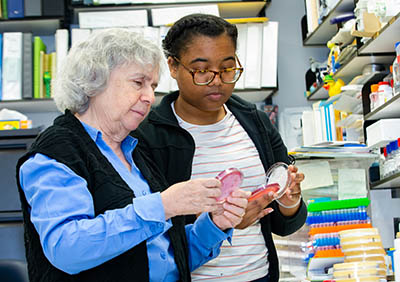
CREDIT: DALE LEWIS, NCI
Students and faculty from Howard University have been conducting research with NIH principal investigators for decades, but in March a formal partnership was established. Shown (pre-COVID-19 photo): NIH Distinguished Investigator Susan Gottesman (NCI) and Howard undergraduate Abbigale Perkins. Gottesman has been working with one of Perkins’s professors (Karl Thompson) for 20 years. Perkins will join Gottesman’s lab as a postbac this fall.
One summer nearly 20 years ago, Karl Thompson came to NIH from Howard University (Washington, D.C.) as a student aspiring to a career in science. “I was the most junior trainee, at a time when there weren’t many Ph.D. students at NIH, but they treated me like family,” said Thompson.
His mentor was NIH Distinguished Investigator Susan Gottesman (National Cancer Institute, NCI), who was already an established leader in the field of bacterial genetics. Today, Thompson is an associate professor in microbiology at Howard University College of Medicine and runs his own lab. He has reestablished ties with NIH and Gottesman under a new formalized partnership between the two institutions. Their collective work is shedding new light on gene regulation at the post-transcriptional level to improve our understanding of human disease.
That new partnership was established in March 2019 when the NIH Intramural Research Program (IRP) and Howard University, a historically Black university, launched a joint venture to share resources and expertise. Although students and faculty from Howard have been conducting research with NIH principal investigators for decades, the new NIH–Howard University partnership centrally coordinates and broadens the investigators’ professional networks. Now, in its second year, the NIH-Howard partnership is opening new doors for Howard junior faculty, postdoctoral fellows, medical residents, and graduate and medical students to become successful investigators and is helping NIH foster diversity in its labs and in clinical research.
“Our original vision was to create a network that could accomplish what no one institution could do by itself,” said John Gallin, chief scientific officer at the NIH Clinical Center and NIH associate director for clinical research. He was instrumental in establishing the partnership.
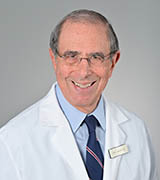
John Gallin, chief scientific officer at the NIH Clinical Center and NIH associate director for clinical research, was instrumental in establishing the NIH-Howard partnership.
Back in December 2017, leaders from the IRP and academic biomedical centers began exploring the idea of regional alliances, unions that would enable new and distinct research possibilities. The program’s architects decided that the best way to move forward was to cultivate one relationship at a time, focusing on training and mentorship. They created a master agreement that serves as a model of how to partner with NIH. Howard was the first to sign on.
“When we launched this collaboration with the NIH, we hoped to bring together bright scientists who could innovate and expand the research experience between the two institutions,” said Hugh Mighty, dean and vice president of clinical affairs at Howard University College of Medicine. There are now five junior faculty from Howard as well as two graduate students and one medical resident working with IRP labs. NIH and Howard hope the ongoing project will continue fostering many quality partnerships.
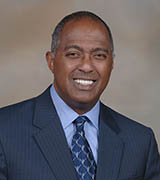
Hugh Mighty, dean and vice president of clinical affairs at Howard University College of Medicine, is enthusiastic about the new partnership.
In addition, many Howard students considering a future in science are using this relationship as a gateway to enrich their professional development. In 2019, with the encouragement of Howard leadership, NIH hosted Howard undergraduate, graduate, and medical students on campus through summer programs and internships, laying the groundwork for the next generation of exceptional investigators.
The new partnership also makes it easier for people from other institutions to work with NIH. “NIH can be daunting to navigate,” said Deputy Director of NIH’s Office of Clinical Research Anne Zajicek, who, along with Howard University’s medical school Associate Dean for Research Celia Maxwell, was very involved in building the partnership. “With this agreement, there is now an open flow of communication, and people are better able to understand the process of how to collaborate at NIH,” Zajicek said.
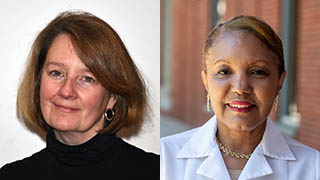
Deputy Director of NIH’s Office of Clinical Research Anne Zajicek (left), and Howard University’s medical school Associate Dean for Research Celia Maxwell, were very involved in building the partnership.
“The partnership…provides access to NIH content-matter experts that Howard may not have due to our small number of faculty,” said Maxwell. It also allows “access to equipment that may be needed to further research by junior faculty or students receiving mentorship.”
Howard Associate Professor Sudha Sharma appreciates having access to NIH’s equipment and cutting-edge genetics technologies, such as advanced next-generation sequencing. She has been working with NCI Senior Investigator Ashish Lal to explore the role that enzymes known as helicases play in genome stability. Sharma was able to sequence her lab’s samples at NCI, resulting in some of the first evidence of how these enzymes may contribute to the development of—and susceptibility to—breast cancer.

Howard Associate Professor Sudha Sharma (right) has been working with NCI Senior Investigator Ashish Lal to explore the role that enzymes known as helicases play in genome stability.
The partnership master agreement also addresses legal and administrative hurdles in an effort to make research relationships easier to establish and maintain. For example, the new master agreement brings relief to partner investigators from a longstanding NIH policy: that outside investigators who come to NIH and use NIH resources to make inventions must assign those inventions to NIH. Now, when non-NIH investigators covered by the new partnership master agreement make discoveries at NIH, they can retain their intellectual property rights when they leave. Gallin noted that this arrangement has been transformative in making collaborations attractive to scientists outside of the government.
Other roadblocks that are being worked out include making sure that malpractice insurance coverage meets federal requirements and identifying appropriate institutional review boards to oversee human clinical studies taking place between institutions.

IRP Director of Research Workforce Development Roland Owens helps to determine who the best research pairs might be.
Setting up the right combination of people for success is a key element of this arrangement. Although some partnerships occur organically, others require a bit of matchmaking. That’s where IRP Director of Research Workforce Development Roland Owens comes in. “My job is faculty recruitment and development,” he said. “I get to know people from my research and training interactions and learn who might be a good match and research partner for a particular mentee from Howard.”

Howard graduate student Raechel McKinley (right) and NIH Stadtman Tenure-Track Investigator Ariel Levine (NINDS) have just begun working together.
He pointed to a brand-new connection between Howard graduate student Raechel McKinley and NIH Stadtman Tenure-Track Investigator Ariel Levine (National Institute of Neurological Disorders and Stroke), who studies how the molecules, neurons, and circuits of the spinal cord mediate normal behavior. Owens hopes McKinley will follow the path of previous trainees—going on to faculty positions and eventually returning to NIH to initiate new roads of discovery with their mentors.
Finding mentors by sorting through the vast pool of talent at NIH is no simple task. “I look for scientists who want to stretch themselves, who are open minded, and enjoy one-on-one teaching, and have an open-minded attitude about how to contribute to the NIH mission,” explained Owens. In turn, Howard internally evaluates applications for mentees twice a year, selecting the most promising candidates—ranging from junior faculty, to graduate and medical students, to medical residents and postdoctoral fellows—who demonstrate a strong interest in pursuing research careers. An NIH team then reviews the applications before a final pairing is made.

Howard Assistant Professor Peter Whitesell (right) and NIDDK Senior Investigator Anne Sumner are exploring the connection between sleep disturbance and the high rate of cardiometabolic disease in people of African descent.
The Howard University College of Medicine has a long history of service to underserved communities surrounding their urban hospital setting, offering an opportunity for NIH to contribute to research addressing health-care disparities in minority populations. For example, Howard Assistant Professor Peter Whitesell and NIH Senior Investigator Anne Sumner (National Institute of Diabetes and Digestive and Kidney Diseases) are exploring the connection between sleep disturbance and the high rate of cardiometabolic disease in people of African descent. Whitesell noted that access to a carefully collected database generated by NIH has been invaluable to his research efforts. His work has resulted in several important abstract presentations and publications.
“The partnership has gone wonderfully, with many of our junior investigators getting opportunities that may otherwise have eluded them,” said Mighty. “We look forward to continued growth for both institutions.”
Beyond this initial pilot phase, the exchange will encompass other academic programs at Howard, such as dentistry, arts and sciences, pharmacy, and even law (to explore bioethics).
“The framework that we have created with Howard is a model for how NIH and other institutions can work together to advance science and improve health,” said Gallin.
Other organizations are entering into partnerships with NIH. Virginia Commonwealth University School of the Arts (Richmond, Virginia) expressed interest in using their media expertise to help NIH enhance community engagement and outreach. The University of Maryland’s partnership will include the schools of medicine, dentistry, nursing, pharmacy, law, and social work as well as the graduate school. And MedStar, the largest health-care provider in Maryland, has access to data that could assist research on the current COVID-19 pandemic.
The vision laid out three years ago was to create a network of partners positioned to address our modern health challenges. Following a successful journey with Howard, this goal seems well on its way to being realized.

Karl Thompson (left) started working with NCI Distinguished Investigator Susan Gottesman (right) 20 years ago as a trainee from Howard. Today he is an associate professor in microbiology at Howard University College of Medicine and runs his own lab. One of Thompson’s undergraduates—Abbigale Perkins (center)—will begin working as a postbac in Susan Gottesman’s lab this fall. (Photo was taken in summer 2019.)
As the journey with Howard continues, a new generation of researchers has already begun to partner with NIH: One of Karl Thompson’s undergraduates—Abbigale Perkins—will begin working as a postbac in Susan Gottesman’s lab this fall.
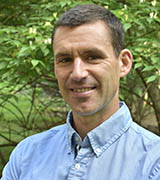
Michael Tabasko is an orthopedic physical therapist and writer, having lived in California and Colorado before coming to Bethesda. In his spare time, he is a competitive cyclist and enjoys adventures with his family in the mountains.
This page was last updated on Tuesday, March 22, 2022
